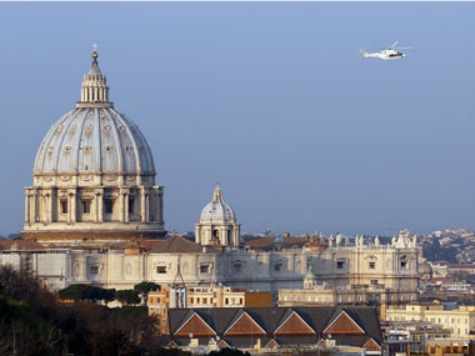The writing is on the wall for Vatican Radio, which can expect substantial downsizing as the media commission works toward reform of Vatican communications operations.
The committee of experts that began meeting this week to study Vatican communications has been charged specifically with proposing how Vatican media outlets can effectively reach more people, and how operating costs can be reduced. Among its targets for cost-cutting, Vatican Radio stands front and center.
Vatican Radio is itself represented on the commission in the person of Giacomo Ghisani, who is in charge of international relations for the radio.
With more than 400 employees and expenses of $37 million a year, while collecting less than $1 million in advertising, Vatican Radio accounts for a significant portion of the Holy See’s yearly deficit. Vatican Radio only began accepting commercial advertising in 2009, in an effort to cover some of its extensive budget.
As a point of comparison, operating costs for Vatican Radio are higher than the combined budgets of staffing and running all Vatican embassies in 113 nations around the world, which run to just over $30 million.
Back in July, Cardinal George Pell, who heads up the recently created Vatican Secretariat for the Economy and is ultimately responsible for the overhaul of Vatican communications, said, “It was in 1931 when Vatican Radio was set up. No longer in most parts of the world, do people listen very frequently to the Radio.”
Yesterday, Lord Christopher Patten, chairman of the 11-person advisory committee, gave an interview to Vatican Radio, in which he outlined his vision for media reorganization. Speaking with an operation that is under investigation, Patten hastened to assure his interviewer of his appreciation for the work of the radio. “We all know how important shortwave radio still is,” Patten said, “in communication with some of the poorest groups around the world, particularly in Africa and Asia.”
Still, Patten noted that “the media finds itself having to run constantly to keep up with changing technology. One is aware of the extent to which the young receive information in a different way to which I’ve received it traditionally.” He further acknowledged that “we want to make sure that the Vatican’s resources, which aren’t limitless, are spent as effectively as possible.”
The question of efficiency has come up over and over again. Cardinal Pell has said that currently “expenditures within the Vatican in no way correlate to the number of people who are reached.” In point of fact, some of the newer media, such as the Vatican’s website, news.va, and the Pope’s Twitter account are reaching more people despite their modest operating budgets. Together, they account for less than five percent of the budget. Next to them, Vatican Radio and the Vatican newspaper, which reach far fewer people yet cost immensely more, look like outdated behemoths.
Vatican Radio saw huge expansion during the reign of polyglot Pope John Paul II. In the 7-year period from 1980-1987 alone, the radio broadened its news service, recruiting 50 journalists of 20 nationalities. The cost of running the radio doubled in the same period, from $8.5 million in 1980 to approximately $17 million in 1987.
The radio is now broadcast on five continents in 40 different languages.
Since its inception, Vatican Radio has been entrusted to the Jesuit order, to which Pope Francis belongs, and its director is Father Federico Lombardi, who is also the head of the Vatican Press Office.
The committee has set a date of next Easter to come up with proposals for the reorganization.

COMMENTS
Please let us know if you're having issues with commenting.